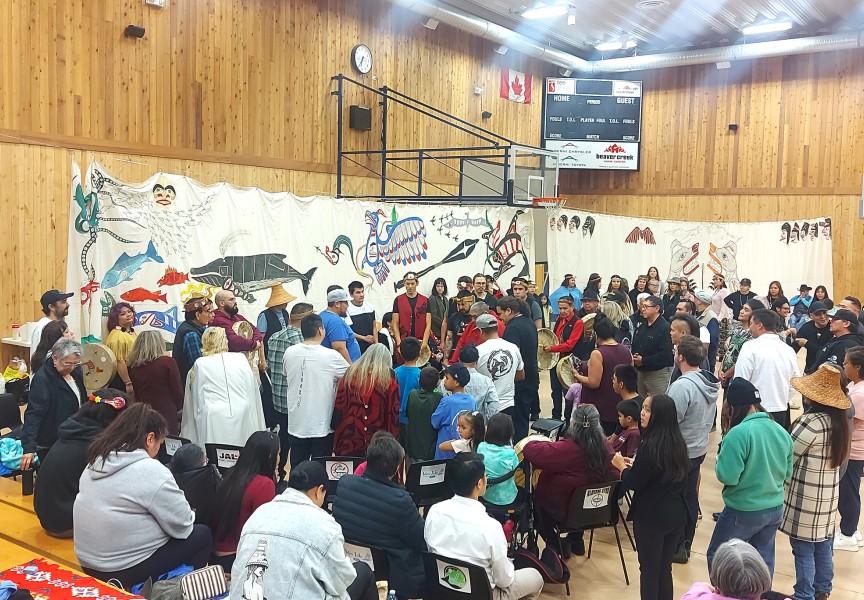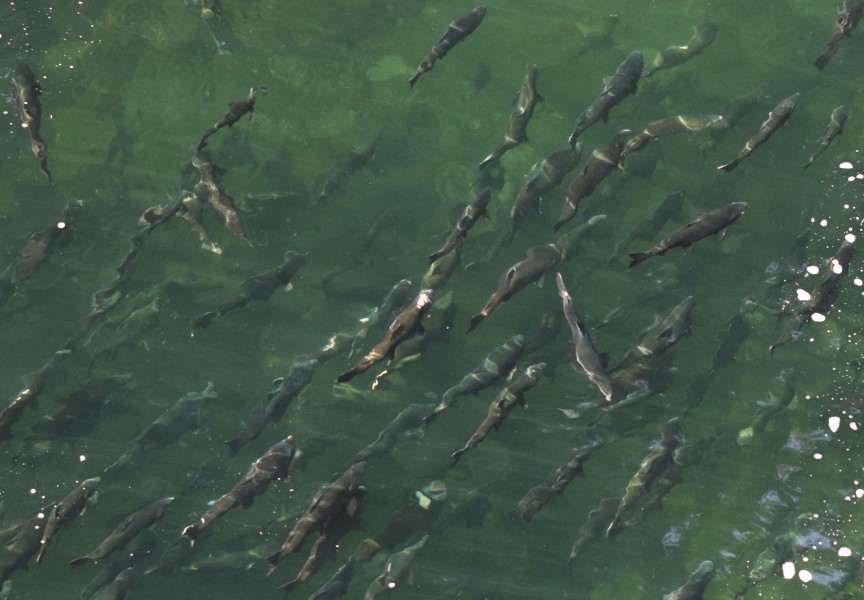Scientific uncertainty continues to cloud waters surrounding marine-based salmon farms despite a court decision that puts DFO on notice, essentially, to clean up its act.
In early February, the Federal Court overturned DFO’s policy permitting fish farm operations to transfer Atlantic salmon hatchery smolts to ocean net pens without screening for PRV (piscine reovirus), a pathogen that critics believe threatens wild salmon, chinook in particular.
Justice Cecily Strickland ruled that DFO fails to consider the health of wild salmon, that the current practice violates the government’s own wild salmon policy and does not meet “the precautionary principle.” She gave the department four months to undertake risk assessment, requiring a thorough review of the science, and to come up with a new policy.
Since the highly contagious PRV pathogen was first diagnosed in farmed Atlantic salmon two years ago (the pathogen has also been found in wild salmon), screening for the virus could bring a halt to Atlantic salmon fish farming in marine waters.
The precautionary principle, as set out in an earlier court decision in the fish farm legal saga, requires that “complete scientific certainty should not be used as a basis for avoiding or postponing measures to protect the environment, as there are inherent limits in being able to predict environmental harm.”
Biologist Alexandra Morton and Namgis First Nation, who brought the lawsuit against Minister of Fisheries Jonathan Wilkinson and two fish farm firms operating in the Broughton archipelago, consider it a clear victory for wild salmon. Others are not yet convinced.
“It would be wrong to jump to conclusions,” said Jared Dick, NTC’s central region biologist, when asked for his thoughts on the controversy.
Both the industry and DFO maintain that the PRV pathogen poses minimal risk to wild salmon since, for unknown reasons, it hasn’t triggered the fatal HSMI (heart and skeletal muscle inflammation) as it does in Norway. The Canadian government is pinning its new aquaculture strategy — intended to set the industry on a course for continued growth — on research and technology to provide answers.
For his part, Fisheries Minister Wilkinson has allowed that migratory salmon pathways may not be the best locations for fish farms due to the risk and uncertainty. He also promises that Canada’s first aquaculture act, yet to become law, will embrace the precautionary principle.
The industry is turning to emerging technology. Cermaq Canada, which runs fish farms in Clayoquot Sound and other locations on the West Coast, announced in January that it plans to launch a B.C. trial of closed containment fish farming currently undergoing tests in Norway. While not wholly contained, the method limits interaction between fish and the external environment.
A report due in May is expected to provide some direction — a possible compromise that would allow the industry to continue the standard practice of transferring smolts from hatcheries to sea pens — but the court clearly forces the government’s hand.
“We are reviewing the court’s decision,” said Shawn Hall, spokesman for the B.C. Salmon Farmers Association (BCSFA), via email. “We look forward to seeing the full risk assessment from the Canadian Scientific Advisory Secretariat, which should provide important context on this complex matter.”
Rocky Boschman is the managing director of Grieg Seafoods BC, which operates fish farms in Nootka Sound. He promised full compliance with any changes in regulations, but expects they would be made on the basis of sound science.
Recent testing of smolts moved from industry hatcheries to ocean pens did not reveal PRV, but the salmon had it when retested three months later, he noted.
“The fish naturally pick it up in the water,” Boschman stated, responding via email. “DFO followed up the court’s ruling with its CSAS report concluding that BC-PRV transfer from Atlantic salmon poses minimal risk to the Fraser River sockeye, which is consistent with previous science.”
Boschman said there is more to learn about BC-PRV, and the company is pleased that DFO plans to undertake more science and monitoring.
“We share the public’s concern for wild salmon and are committed to continue our longstanding support for independent research into the health of wild salmon populations,” he wrote.
As a biologist, Dick wrestles with the uncertainties around wild salmon declines, considering possible impacts from climate change, logging or disease.
“It keeps me up at night thinking about it,” he said. Yet he feels it would be premature to pin the blame for chinook collapse in Clayoquot Sound on fish farming.
“How do they know it’s not causing mortality if they’re not, for example, doing pre-spawn mortality sampling in the rivers? I don’t think the sampling’s been done to demonstrate nay or yea.”
Uu-a-thluk, NTC’s aquatic resource department, is planning to conduct tissue sampling in the coming season that may shed some light on the mystery, he noted. While some in the Nuu-chah-nulth community want sea-pen farming stopped, others recognize the industry’s importance.
“People are not considering the socio-economic impact and whether it’s feasible,” Dick added. “That’s the balance I’ve come to learn and respect. What are you going to tell all the Nuu-chah-nulth families that rely on that industry for a paycheque?”
Hall said the industry believes in working closely with First Nations and coastal communities, supporting continued research and enhancement, and “employing thousands of local people while providing approximately three-quarters of the salmon harvested in B.C. each year.”
There remains a possibility that DFO could appeal the Federal Court judgment.







